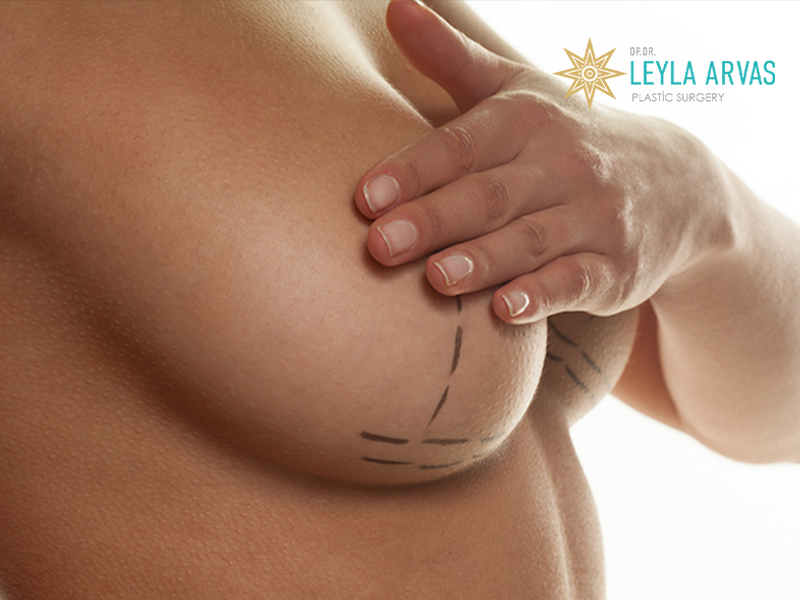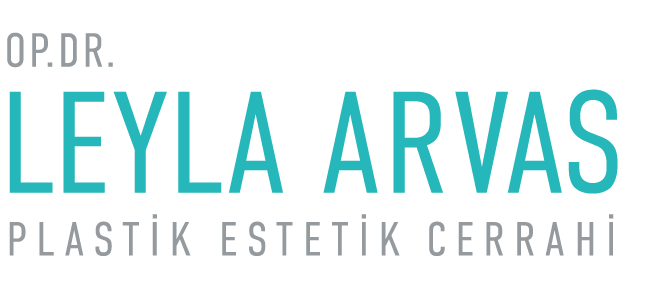Nipple Reduction surgery is an effective solution for individuals seeking to enhance the appearance of their breasts, particularly when dealing with large, puffy, or asymmetrical nipples. With nipple aesthetics and areola reduction procedures, both women and men can achieve beautifully proportionate and aesthetically pleasing nipples and areolas.
Simply treating the nipple, or areola might result in a more visually attractive breast since aesthetic breast treatments like breast augmentation and breast lift receive so much attention. Nipple aesthetics enables the resolution of issues affecting men and women rather frequently. However, with gynecomastia surgery on males, nipple aesthetics can be done as part of areola reduction.

It is not advised to remove the nipples too much if they are huge, due to the possibility of diminished nipple sensitivity. Even though some patients may want to have nipple aesthetics because they are self-conscious about their nipple issues, other people may require the operation for medical reasons such as difficulty nursing.
In addition to these issues, post-breastfeeding areola enlargement is possible. With nipple aesthetics, you may get rid of the problems with your nipple and go about your life with greater assurance thanks to a nipple that looks more lovely and healthy.
What Causes Deformation In The Nipple?
Nipple collapse is a structural problem that usually starts in adolescence. It can happen in just one breast or both. In some cases, the nipple may fall off because it has changed shape because of breastfeeding, losing too much weight, or having breast cancer.
Breast collapse can also be caused by milk ducts that pull the nipple in and an imbalance of muscles in the nipple that pulls the nipple out. A previous breast infection is one of the most common things that can cause the nipple to collapse.
When there is an infection in the breast, the milk ducts get clogged and get shorter. When the milk ducts get shorter, the nipple goes down or completely turns in. Two to three out of every hundred women have this problem on one side or both sides.
Types Of Deformation In Nipple
Most of the time, the breast tissue pushes the areolas forward, which makes them look bigger. This can be seen in lumpy breasts, which are caused by a genetic condition in which the base of the breast gets smaller and the inframammary fold, or breast fold is high on the chest wall. This makes the breast look long and tubular. Areola reduction surgery can be done with or without a breast lift or reduction to fix a puffy areola.
If one areola is bigger than the other, it can be made more even by making the larger areola smaller so that it fits the smaller areola.
Most of the time, the edge of the areola is round, but sometimes it can be oval or have another strange shape. Surgery can be done on the areolas to make them look round and even.
How Does Nipple Reduction Work?
The procedure for reducing sunken nipples is performed under local anesthetic and takes around one hour. You do not need to stay in the hospital following the procedure; you can return to work the following day. The most significant factor in the nipple procedure is whether or not your milk ducts are severed.
The connection between the milk ducts and the nipple will decide the surgical method. This region is safeguarded and the sunken nipple is brought out if you do not want your milk ducts severed. The nipple removed after this treatment, however, may collapse again over time.
This risk is eliminated in surgeries where the milk ducts are severed. The ligaments that pull the nipple in are severed during the collapsed nipple procedure, and temporary or permanent support is put beneath the nipple.
Is It Possible To Reduce The Size Of The Larger Nipple With Surgery?
Women with huge breasts or who are overweight may have enormous nipples. If you have nipple enlargement owing to a huge breast, entering from the nipple reduces both the breast size and the brown region on the nipple. If you merely have a major nipple issue, the brown region can be minimized with a local anesthetic.
The areola is the brown or pink region surrounding the nipple. The nipple’s radius usually is between 4-5 cm. The nipple can range in size from 12-23 cm in some circumstances. The nipple stays linked to the body during your nipple reduction operation, and normal blood flow is not stopped. Your milk ducts, and hence your ability to breastfeed, can be retained depending on your anatomy and the adjustments you choose.
Many surgical procedures are performed and tailored to your unique aims and preferences. Please keep in mind that not every woman can breastfeed, regardless of whether she has had surgery or not, because the capacity to breastfeed is inherited.
Areola surgery, or nipple aesthetics, is a modest cosmetic technique. A tiny incision is made in the nipple, and the darkly pigmented portion is shaped to the desired shape. The surgery is carried out just by anesthetizing the nipple, i.e. using local anesthetic. On the same day, the patient can resume his normal activities.
Some pain medications may be prescribed to the patient to provide postoperative comfort. There is no regrowth of the pigmented area of the breast following areola aesthetics. This operation, which has no impact on the patient’s social life, heals by leaving a very little scar around the areola.
Nipple Reduction For Men
Many men have a condition called “Puffy Nipple,” which is part of Gynecomastia, or enlarged male breasts. It is caused by too much breast tissue or enlarged breast glands under the nipple/areola, which pushes the nipple outwards into a cone shape.
Statistics show that up to 60% of men around the world will have Gynecomastia at some point in their lives, and between 30% and 60% of male teenagers will also have it. Most teens between 13 and 17 years old and men over 60 years old have it. The nipple can also be changed by changes in weight. Many men choose to have this surgery to feel better about how they look. It can also improve their self-esteem.
This can make you feel self-conscious, especially when you wear t-shirts, swim, or do other things that require your chest to be bare.
Nipple Reduction: What To Expect?
How a nipple reduction is done depends to some extent on the shape of the enlarged nipple and how much of a reduction the patient wants. Different doctors use different methods, such as cutting off just the top of the nipple and sewing it back together with tiny cuts.
During nipple surgery, small cuts are often made in the nipple to remove the extra tissue. Most of the time, local anesthesia is used to numb the area so that the procedure can be done. Nipple correction surgery may also involve removing a cylinder of skin from around the nipple’s neck, then pushing the nipple back into the breast tissue and stitching the skin closed. After nipple reduction surgery, the feeling is almost always normal, and breastfeeding is usually easy to keep going.
If the surgery isn’t done at the same time as other cosmetic surgeries, it usually only takes about an hour and is usually done on an outpatient basis or during the day. There isn’t much pain, and most people who get a nipple reduction won’t need any kind of sedative. Also, most people are back to normal after the procedure in just a couple of weeks.
Most people don’t need much time to recover. They can go back to work or do other normal activities within hours of getting a nipple reduction, and they can take a shower the next day. The stitches or sutures may dissolve on their own, or the patient may have to come back to the clinic 4–7 days after the nipple reduction to have the stitches taken out. Waterproof bandages are put on the wounds to keep them dry and clean. The swelling and pain aren’t too bad, and the results look and feel natural and don’t take long to show up. In most cases, the nipples will feel normal again.
Possible Risks And Side Effects Of Nipple Reduction
Even though nipple surgery is thought to be a safe and simple cosmetic procedure, there are some risks that patients need to know about before the surgery. Any surgical procedure carries the risk of bleeding, which can cause bruises. Most bleeding will stop on its own, but if it doesn’t, please contact us so we can figure out what’s wrong.
Most bruises are small, mild, or moderate, and they show up a few days after surgery. Cold compresses done at home can help reduce pain, swelling, and bruising. If the bruises don’t go away, you should make an appointment with Dr. Leyla Arvas.
Even though infections are rare after nipple surgery, they can happen during and right after any surgery. If small infections do happen, they can slow down the healing process. If you carefully follow the aftercare instructions for your nipple correction surgery, you will be less likely to get an infection.
Does Nipple Reduction Leave Scars?
One of the risks of nipple surgery is that it could leave scars. Scarring will be different for each person. In many cases, the scar will fade until it is almost unnoticeable, but in other cases, it may be more obvious.
The tissues in the nipple are fragile, and even a small amount of swelling can last for a few weeks. This is normal, and it will get better in time. There is a small chance that after nipple correction surgery, the nips may not be the same size or shape.
It is rare to stop being able to breastfeed, and it shouldn’t happen unless the ducts are cut. Loss of feeling in the nipple is rare, but it can happen in the weeks after surgery. Usually, the feeling comes back in the nipple 3 to 6 months after surgery.
Nipple Reduction Price In Turkey
Prices for nipple reduction can vary depending on the person and the kind of work that needs to be done. The doctor has to see you for setting the price of nipple reduction. It is against the law for websites of centers that have been approved by the Ministry of Health to list prices. You can call our health center at +90212 241 46 24 to find out how much nipple reduction costs.
